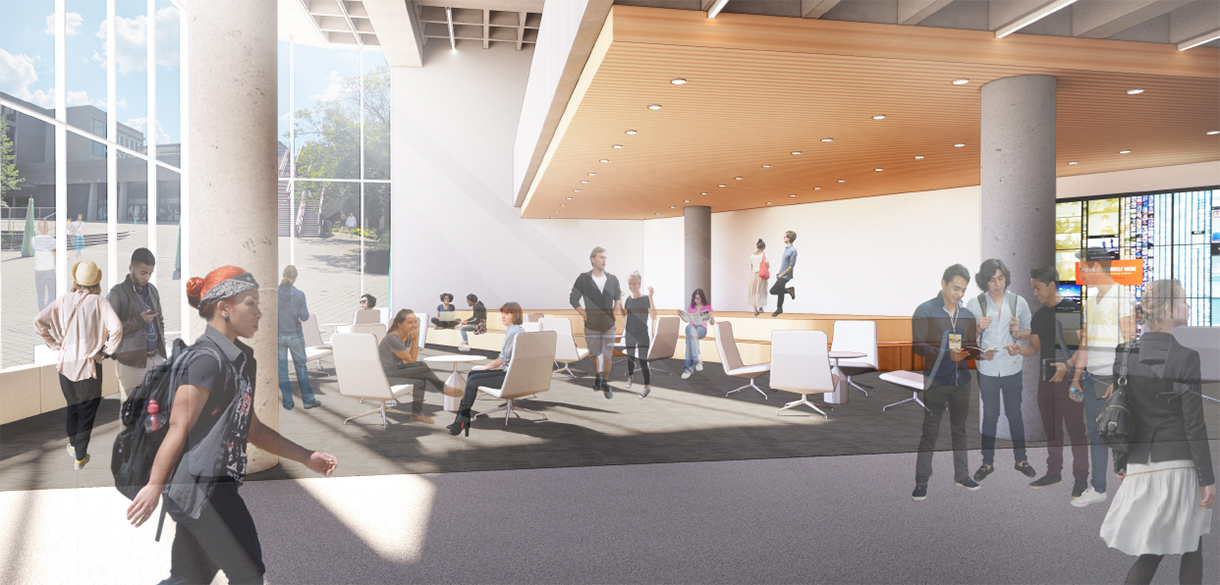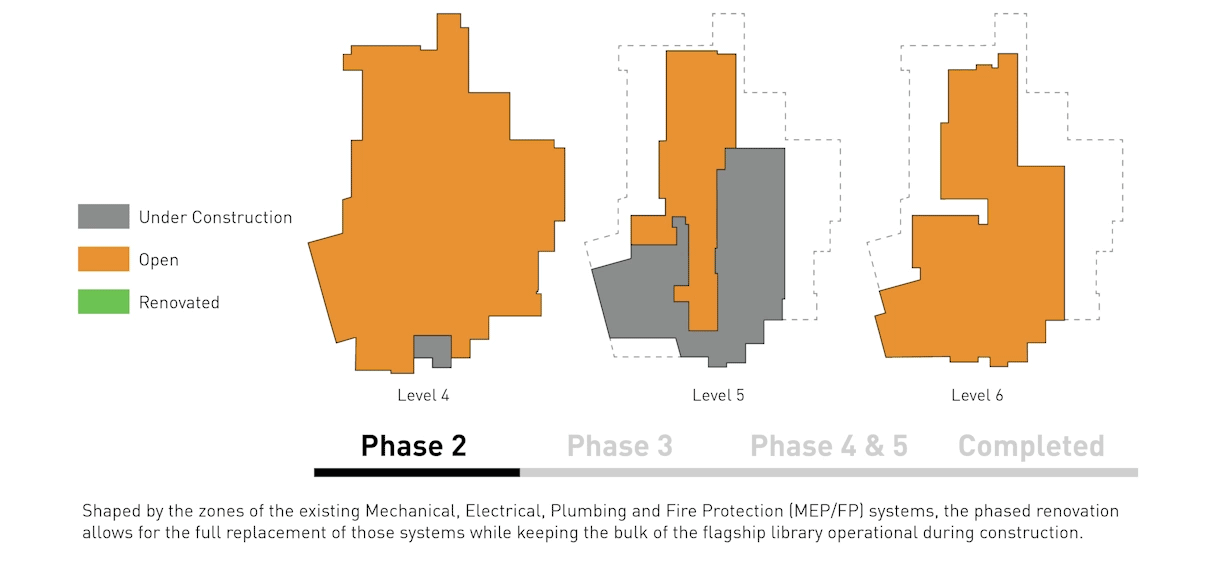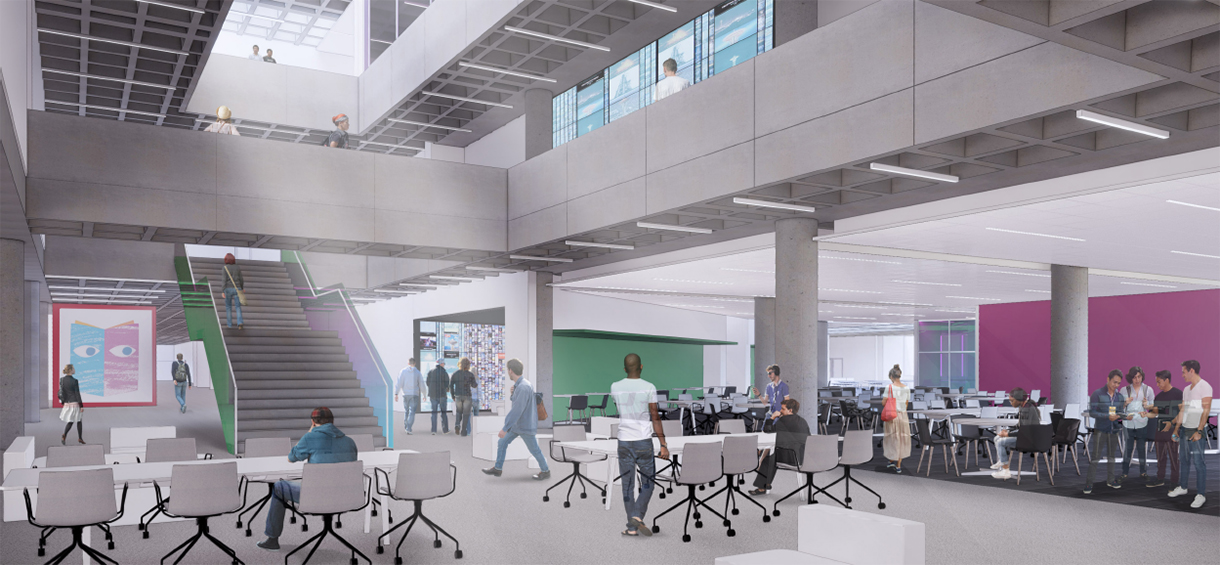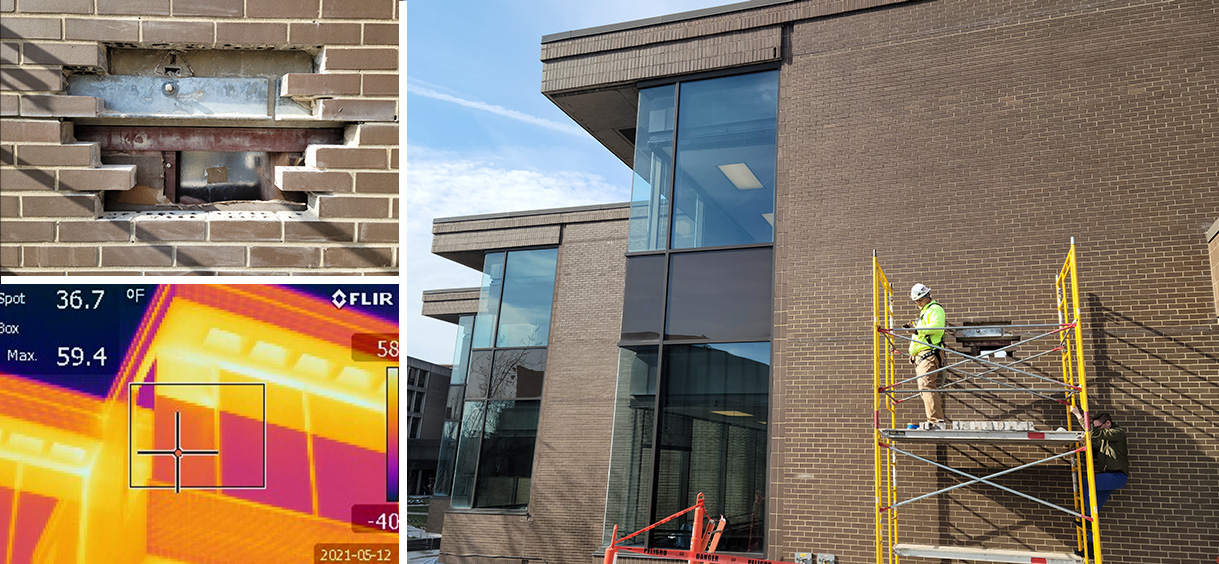A Space for Books Becomes a Place for People
University of Cincinnati, Langsam Library Masterplan
←
To All
Cincinnati, OH | 160,000 SF
 An expanded entrance offers space to exchange ideas, host events, and connect visitors to library resources.
An expanded entrance offers space to exchange ideas, host events, and connect visitors to library resources.
As the need for large, onsite collections of printed materials has diminished, the opportunity has emerged to remake the library as a vibrant public space where ideas are exchanged, the scholarship of faculty and students is celebrated, and students are engaged in the creation of knowledge (not just its consumption).

Implemented over multiple phases to avoid disruption of critical library services, the masterplan will infuse the space with natural light, create a more welcoming space, and spark discovery. A deep overhang on the south side of the building currently prevents natural light from entering the main atrium, leaving it feeling cut off from campus. A future phase of the masterplan calls for pulling a new glass entry toward the edge of the overhang, turning the first floor into an inviting extension of the public plaza just outside.
 Individual and group work spaces offer students options in how to work.
Individual and group work spaces offer students options in how to work.
 Moveable furniture enables students to reconfigure study spaces to serve their needs.
Moveable furniture enables students to reconfigure study spaces to serve their needs.
Within this new entrance, more varied collaborative spaces will greet visitors as digital displays line upper floors of the atrium, inviting students to discover knowledge and community deeper within the space. A reoriented grand staircase will reinforce the invitation to explore, and a better visual connection to Burnet Woods—once obscured by stacks and private offices—will create a lighter, more welcoming interior.
 A reconfigured first floor invites students and researchers deeper into the library.
A reconfigured first floor invites students and researchers deeper into the library.
As Langsam’s interior is transformed, its façade will be as well. Façade and mechanical systems updates are expected to reduce energy use by approximately 67%, because any future-oriented library will not only change how we engage information but how we engage the world.
 Advancing UC's sustainability commitments, façade and mechanical system improvements are expected to cut the library's energy use by more than half.
Advancing UC's sustainability commitments, façade and mechanical system improvements are expected to cut the library's energy use by more than half.



